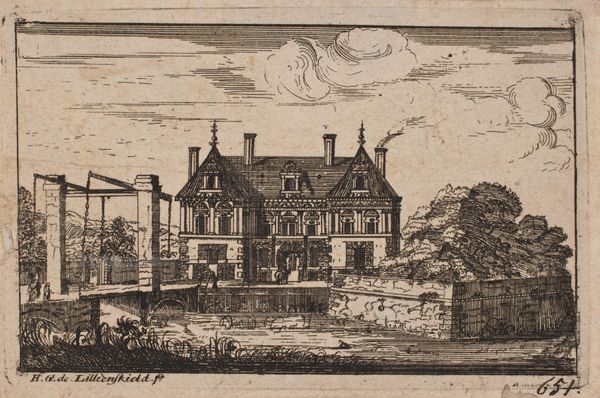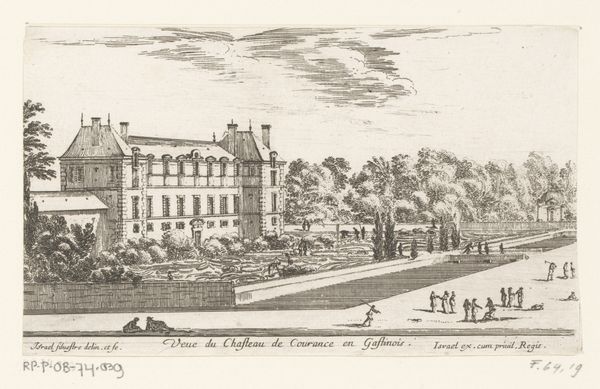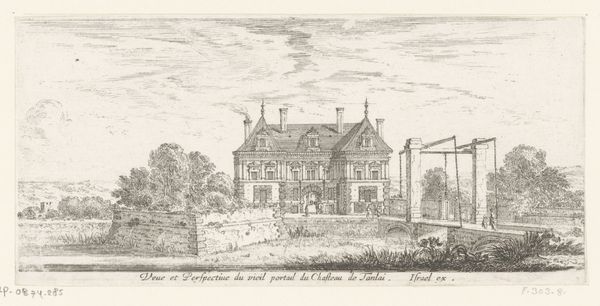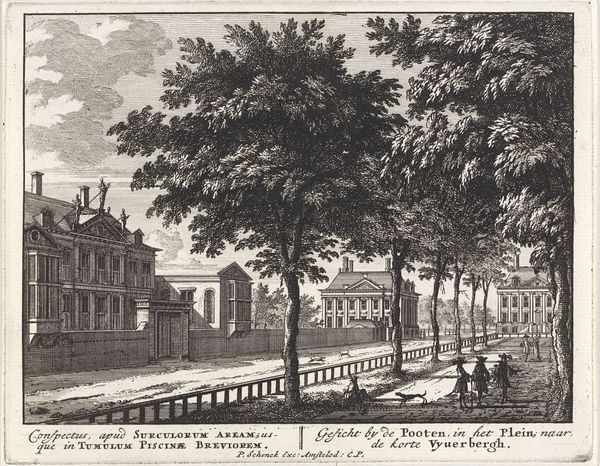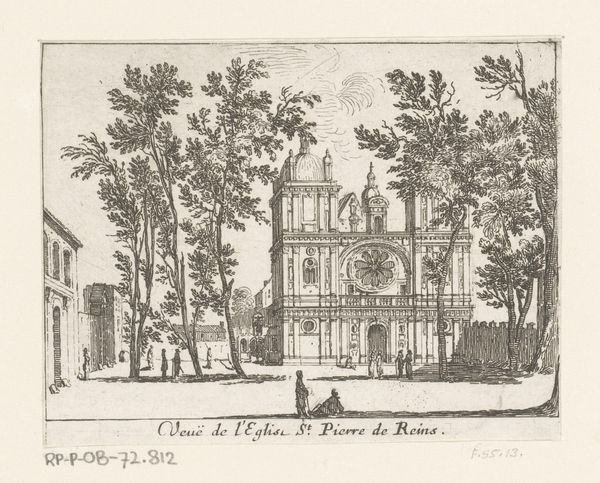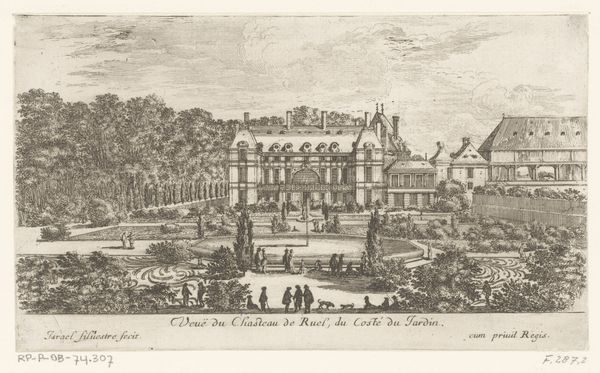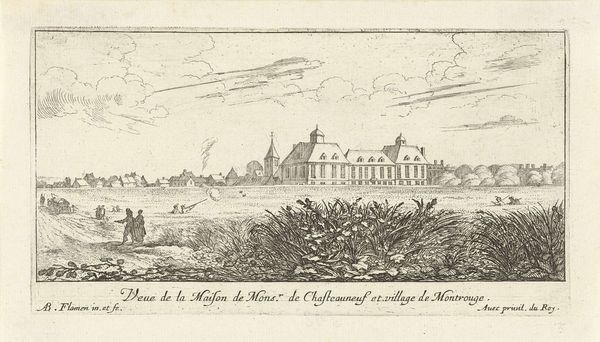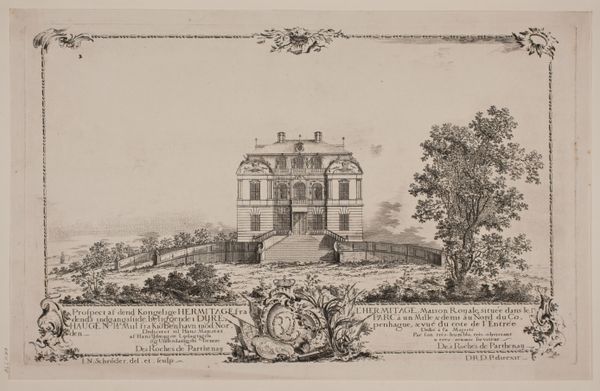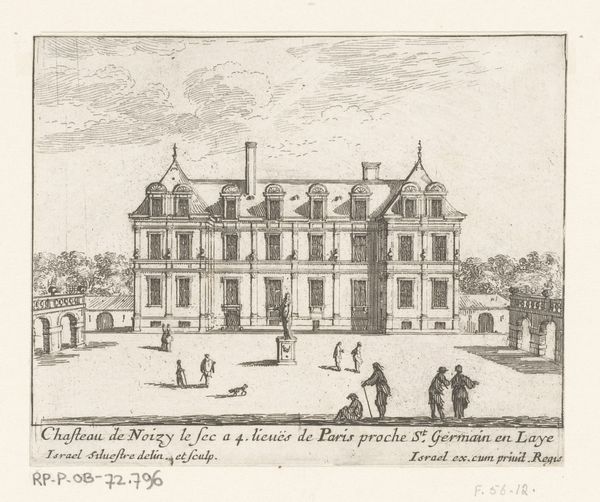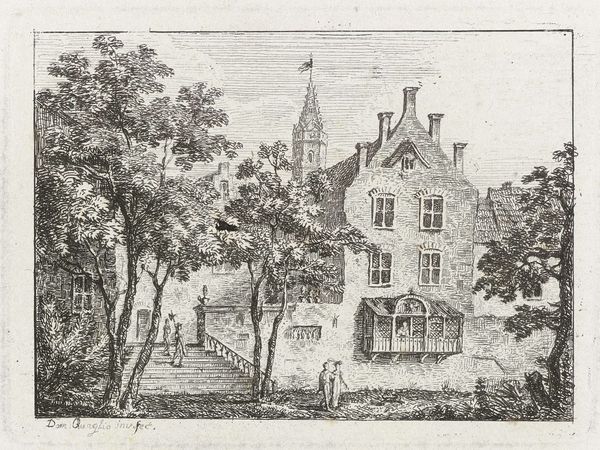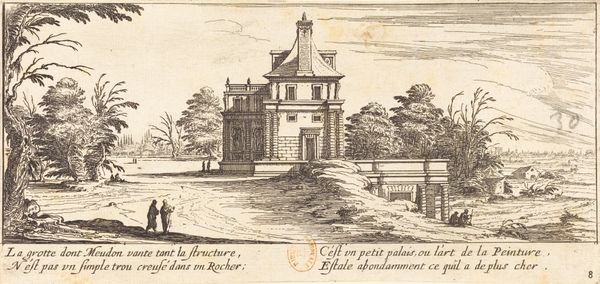
drawing, print, ink
#
pen and ink
#
drawing
#
baroque
# print
#
landscape
#
ink
#
cityscape
Copyright: National Gallery of Art: CC0 1.0
Editor: This is Israel Silvestre’s "Veue de l'Hostel de Soissons," created in 1652 using pen and ink. The level of detail is amazing. I'm struck by the contrast between the manicured gardens and the imposing architecture. How do you read the relationship between nature and power represented in this image? Curator: It's interesting you point out that tension. Consider that formal gardens in this era weren't simply about aesthetics. They were visual statements of control, echoing the rigid hierarchies of the court. Silvestre's print, by showcasing the Hôtel de Soissons, speaks to the aspirations of those in power and their ambition to dominate, reflected even in how they shaped the natural world around them. Do you think Silvestre is critiquing this display, or celebrating it? Editor: I'm not sure! The way the trees frame the building, it almost feels like he’s positioning nature as a witness to human ambition. Like nature existed before and will exist after all of it. Curator: Exactly! It hints at an underlying commentary about the ephemeral nature of power itself. Silvestre, as a printmaker during the Baroque era, operated within specific patronage systems. It’s worth asking: what choices did he make, consciously or unconsciously, that might either reinforce or subvert the status quo? How might anxieties about social mobility or resistance filter into his seemingly objective depiction? Editor: That’s such a different way of looking at it, understanding the political climate through something that seems like a simple landscape. Thanks for showing me how much more there is to see. Curator: Of course! Thinking critically about art always means situating it within its broader context and considering how it might speak to power dynamics, even in unexpected ways.
Comments
No comments
Be the first to comment and join the conversation on the ultimate creative platform.
